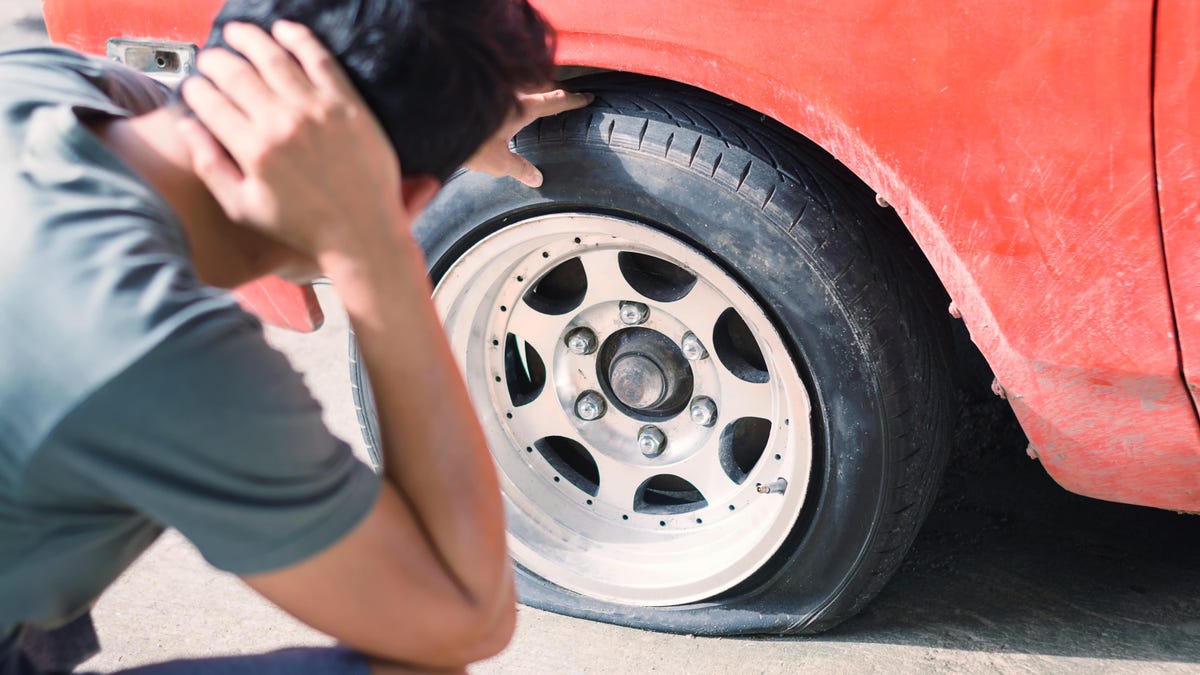Getting a flat tire isn’t just a hassle: It can also be expensive. Depending on the circumstances, and what caused the flat, it may be possible to have the tire repaired, instead of replacing it. But when that’s not an option, and you only have one flat tire, how do you know whether you can get away with buying one replacement, instead of a set of four new tires? Here’s what to know.
When you can get away with replacing one tire
Most professionals will tell you that it’s best to replace all four tires at once—even if they’re relatively new, and you only have one flat. There’s a reason for this (beyond making them making money): When you only replace one tire, it will have a different tread depth than the other three, which can impact its accelerating, braking, and cornering abilities, as well as the vehicle’s stability.
Of course, not everyone can afford an entire set of new tires at one time, and may opt to purchase a single replacement instead. According to Rick Popely of Cars.com, this is possible, as long as the other tires still have most of their tread. Here’s how he explains it:
Tread depth is measured in 32nds of an inch, and most new tires typically have 10/32 to 12/32 (5/16 to 3/8) of an inch of tread. If a car’s other tires have lost only 2/32 or up to maybe 4/32 of their original tread depth, it’s probably OK to replace just the damaged tire.
This article from J.D. Power goes into more detail about how to get away with replacing one tire.
When to replace all four tires after getting a flat
There are certain situations, however, when you really do need to replace all four tires after getting a flat, including when:
It’s a four-wheel-drive or all-wheel-drive vehicle
Cars with this feature tend to be sensitive to even minor differences in tread depth, tire diameters on an axle, and between tires on different axles. These differences can lead to a glitch in the drivetrain system.
It’s a two-wheel-drive vehicle with four worn-out tires
In some cases, it’s possible to get away with replacing two out of four tires on a two-weel-drive vehicle, as either the front or rear pair will have more wear than the other two. However, if all four tires are around 70% (or more) worn, Ryan Pszczolkowski, Consumer Reports tire program leader, recommends replacing the entire set.
The owner’s manual indicates that it’s necessary
If you’re deciding between whether to replace one, two, or all four tires, start by checking the owner’s manual. There you’ll find instructions and specifications for tire replacement, including whether it’s necessary to get a full new set.

